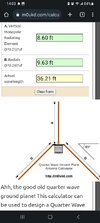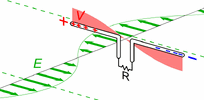Hello! New guy here. Had a couple of CB’s back in the 90’s but not for very long. Looking to get back into it again but this time I want to learn the ins and outs of it instead of just connect a radio to an antenna and set SWR and then just talk. So I’ve been reading and watching videos a lot lately on several forms of radio, CB, GMRS, MURS, marine VHF, and some HAM.
This brings me to my first question on SWR. From what I understand, any antenna length is set based on what frequency or band of frequencies you wish to receive and transmit on. Longer wavelengths require longer antennas it seems. So does this mean that once I get an antenna set to the right length for an SWR down near 1:1, on any of the radio types I mentioned above, if I swap radios I shouldn’t need to reset the antenna SWR again should I? I’m only asking for basic knowledge and understanding. I have yet to choose a radio and antenna. I’m just gathering knowledge as of now.
This brings me to my first question on SWR. From what I understand, any antenna length is set based on what frequency or band of frequencies you wish to receive and transmit on. Longer wavelengths require longer antennas it seems. So does this mean that once I get an antenna set to the right length for an SWR down near 1:1, on any of the radio types I mentioned above, if I swap radios I shouldn’t need to reset the antenna SWR again should I? I’m only asking for basic knowledge and understanding. I have yet to choose a radio and antenna. I’m just gathering knowledge as of now.




